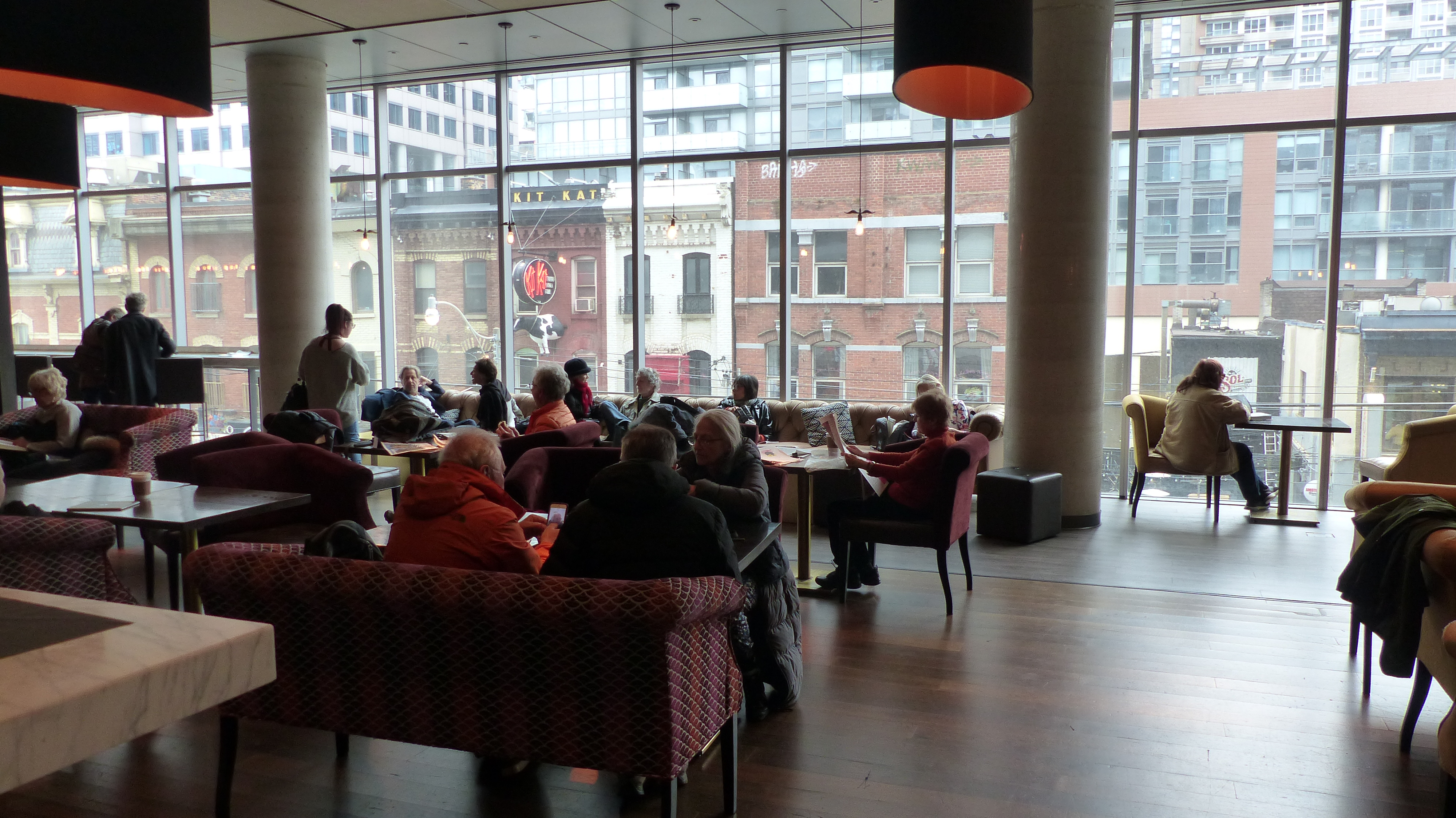
Hot Docs 2019 –
Current documentary, the world and us

This
year’s Hot Docs in Toronto was as rich, diversified and oversized
as usual. No chance of seeing “everything of interest” so the
selection process focused on one or two personally chosen themes to
see where things stand on those points.
The themes had to do with the present state of capitalism and anti-capitalist resistance or thinking, on one hand, and on the state of the native indigenous people’s struggle for justice on the other.
In the first category we can put Fredrik Gertten’s “Push”, Fred Peabody’s “Corporate coup d’Etat”, John Walker’s “Assholes” and Shannon Walsh’s “Illusions of Control”. On the indigenous people’s front, we saw “N. Scott Momaday – Words from a Bear” by Jeffrey Palmer and Tasha Hubbard’s “nîpawistamâsowin - We will stand up”. Alongside among the portraits of oppression and resistance, we saw “Advocate” by Rachel Leah Jones and Philippe Bellaïche, as well as Ai Weiwei’s “The Rest”.
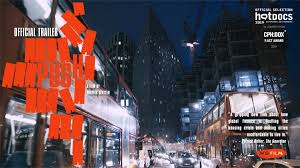
“Push”, like all the feature length essay films, tries to create a distinctive visual style with its graphics.
Among the three, feature length documentary inquiries into the functioning of contemporary capitalism, the films by Gertten, Peabody, and Walker, there is a similarity of format and a similarity of vision – the documentary filmmaker as craftsman and intellectual, putting into form through “encounters” with reality, and excerpts of conversations with intellectuals the left-wing conscience of the time. In all cases we are looking at critical reflection on the latest developments in international capitalism, or its consequences in human behaviour. All are critical of the unbridled, deregulated financial capitalism that has taken over the world economy since the oil crisis of the seventies and reduced state limits on market functioning to a shadow. These essays take time to make so that there is a “development” in understanding that allows the audience to feel they are moving ahead in their comprehension as they advance through the film. They nonetheless tend to overwhelm us with information and references. The filmmakers seem to forget at some point that a documentary is not a book, or a long article. Nobody in the audience is as familiar with the interview transcriptions or the detailed treatment as the director or the editor are, and nobody has the leisure of running back and checking that they really understood such and such a point or development. At the end of the film, each member of the audience will have been touched by a sequence, a confrontation or a moment of explanation but there are so many that a week down the road, they are unlikely to remember much beyond a general argument and one or two of the more striking scenes.
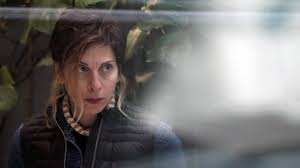
Leilana Farhi, current UN rapporteur on housing rights, and key to the film
That’s why the films with the biggest impact build on strong personalities, and they also pay attention to the dynamics of resistance. Gertten’s “Push” relies heavily on his key character, Leilana Farhi, housing activist who has become the UN special rapporteur on housing rights. She is strong enough to carry the film along. He also risks using mise en scène and a certain intimacy in his scenes with her so she becomes a real character. This is probably why amid all the explanations and clips of interviews with the experts (among whom Joseph Stieglitz shines), the film ends up leaving a strong impression and a strong message : it is not just the gentrification of poorer neighbourhoods that is feeding the housing boom, it is also the influx of speculative finance, the very source of the 2008 housing crash, which is sucking wealth from the damage it caused. And all this because of weak governments, and self serving politicians. There is enough collective resistance in this film, from London boroughs, via the Barcelona town hall to Toronto rent strikes, to make a push-back seem possible, and this impression is amplified by the vitality and gritty stubbornness of Farhi’s constant dynamism. Some people have a distaste for personalising issue documentaries, but here I think the method works to make the film stronger.
In Peabody’s film, “Corporate Coup d’Etat”, neither Chris Hedges nor John Ralston Saul, who provide the intellectual support and the critical framework, are given as much presence or human depth. We see Hedges visit and engage with people on the ground or in the media. This sets him off as a positive and courageous figure, but there is no intimacy or proximity to suggest that he is a human being to like or identify with. As for Saul, or Maud Barlowe, they are simply talking heads, vehicles for talking points, interesting enough, but with little cinematic presence. And it’s not by shooting an interviewee simultaneously from three different angles that this problem is addressed.
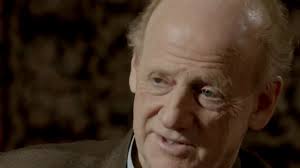
John Ralston Saul, a talking head, from one angle
In fact the most powerful parts of the film are the very graphic, almost poetic scenes of desolation amid the ruins in Camden, New Jersey and Youngstown, Ohio. The encounters with totally discouraged voters, repulsed by the business friendly politics of Hilary Clinton’s Democrats and who ended up voting Trump (as Michael Moore said they would), show us the space open for ultra right populism. The convocation of Benito Mussolini enunciating that it is time to “Make America Great” is intriguing, and allows an explanation, pedagogical enough, of what we mean by corporatism. And there are moments that pull an emotional cord, particularly while visiting foreclosed homes or out there in tent city, among the homeless. But the film stops short of sketching what a corporatist, repressive America might really look like or mean to its citizens, even though it raises the question.
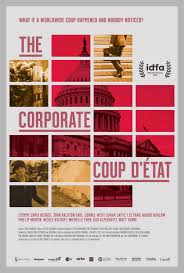
The film demonstrates forcefully its fundamental thesis, that corporations have made huge strides in becoming political actors since the sixties, when they were put on the defensive by agitators such as Ralph Nader. It provides the evidence and shows some consequences of this totally conscious and major shift in power. But it doesn’t really look at who’s fighting back and how the dynamics might change. Our two intellectuals, even though they dominate the film’s timeline, seem to be tiny forces in the face of the powers of money and manipulation they are up against. This said, the issues laid out are totally worth a projection and a debate.
John Walker’s “Assholes, a theory” is not his best film. And I hope the filmmaker doesn’t mind me saying this. He is responsible for a number of films I consider excellent or outstanding, “Strand, under the Dark Cloth”, “Place of the Boss – Utshimassits”, “Passage”, “Quebec, my country, mon pays”, to name a few. He is also highly prolific, turning out a film every two years or so, all large projects requiring a certain amount of money, and large amounts of preparation and energy. So I’m sure he won’t object if I point out a few problems I see in the treatment and focus of this latest film.
The filmmaker here grapples the problem of making a film based on a book (author Aaron James) that takes itself seriously as “philosophy”, so essentially a series of definitions, arguments and examples. The project is anti-cinematic in a way, and is in strong need of a guiding human presence, which James himself visibly isn’t, though he looks like a nice guy. Walker himself attempts to provide something of a guideline via an ongoing commentary which leads us from scene to scene accompanied occasionally by animated illustrations of himself. This works OK in terms of comprehension and development but not at all in terms of identification. We don’t really understand why the subject angers and engages him enough to prompt the probably sometimes pain-causing decision to produce and direct a feature-length film about it. This is in clear contrast with the urgency of his personal engagement in “Quebec, my country, mon pays”.
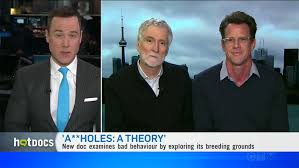
Interviewer and authors split screen
We also
don’t really understand where all this development in “assholery”
comes from. The film, in my view, doesn’t insist enough on the
relation between the flourishing of the behaviour and the development
of financial capitalism, the creation of a closed hothouse
environment among the capitalists and their agents where aggressive,
autistic narcissism (that’s what we’re talking about behind the
catchy title) is encouraged as a key and formula for “success”.
The film’s most interesting choice, to develop a sequence on
Berlusconi and the triumph of his brand of reactionary macho media
populism in place of the more obvious example in the USA, does not
give us an analysis of the breakdown and paralysis of the Italian
post-war consensus (unless my memory fails me, which is possible)
that made Berlusconism possible. It’s not just a question of the
glitz, glamour and girls of his TV stations. So it’s hard to put a
political sequence into place.
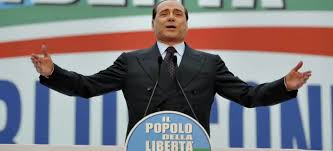
We are shown examples of “asshole” companies, Google, Apple, Amazon, essentially visualised through their architectural incarnations. As a counter-example, we are shown the experience of one successful, stable hedge fund that resisted the 2008 crisis without layoffs because it retained an ethical and long term vision of its role. Are we to understand that capitalism could work with few problems if only everybody were nice? That is to ignore the fact that capitalism is a dynamic and that there’s no going back. You can’t just regulate your way to a pre “fake-news” democracy, even supposing you could fight the lobbies and build the balance of power necessary to regulate anything these days. The dynamic will keep rolling on, destroying what is best in the planet and in humanity until it has exhausted not only itself but its entire environment. So the comprehension of current “assholery” and its recent proliferation is not completely satisfying. Some of the examples highlighted raise the same problem from another angle.
The most positive figure in the film is provided by Sherry Lee Benson-Podolchuck, a former RCMP constable bullied and harassed out of her job. Her example not only answers “yes” to the question: “are there Canadian assholes?”; it also is a hommage to the extraordinary courage and determination the heroine shows in facing down and resisting an organisational culture of macho intimidation and threatened violence. The cherry on the cake is that she wins in the end, at least to the extent that our non-asshole leader, Justin Trudeau, appoints a woman to head the RCMP and set up a major review of sexism in the organisation. However this example, as does the example of “frat” societies in elite universities, seems to move us to different ground than the development of individual hypertrophied narcissism encouraged by the functioning of the economy. And it also refers to oppressive institutions that have histories of reaction and repression that go far back before the business financed reaction of the seventies and eighties. The fact that police forces and frat societies are brutal, sexist and hostile to women, sexual or racial minorities is not new, it is a structural factor of patriarchal socialisation since such organisations were founded. It’s good that they’re finally being called out. But we’re moving more into the terrain of exposing the nests of fossilised machism, rather than understanding the change in role model the book aims to analyse.
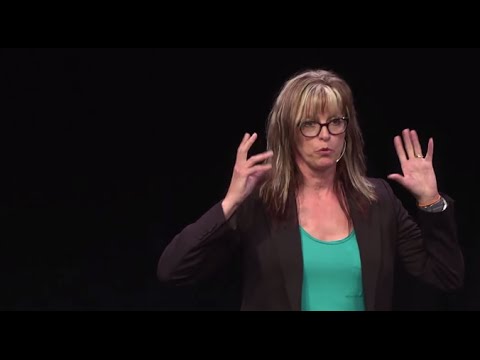
The heroine
So I find Walker’s film more interesting when it focuses on individual behaviour and the way society breeds and fosters the competitive mindset beyond these traditional nests of brutality and egotism. It would have been interesting if the film had focused not only on changes in behaviour on the surf waves, but also on the road, in the classroom, assembly line or research lab. Anywhere where a micro culture fosters inter-worker competition and not cooperation. And this is where the given explanations of the phenomenon and proposed reactions let us down a little. It’s not just a question of maintaining an ethical compass. Of course it’s important to maintain an adherence to values and ethics. But resisting also means changing the way the system fosters and encourages the disease. And that means rethinking the society we want.
"Illusions
of Control" also raises the question of the society we want.
Except that the filmmaker, Shannon Walsh, bets rather optimistically
that by filming over time four or five processes that show human
resilience in the face of disaster, she’ll be able to pull together
that rare bird – an optimistic (or at least, not entirely hopeless)
movie about human resilience in the face of environmental catastrophes.
It works so so. And for a
variety of reasons. Reclaiming the desert in China caused presumably
by excessive and irrational irrigation policies engages a family and
a village in a collective struggle to improve and repair their
environment and daily life, but there is little discussion about the
whys and hows. We see the people at work, we don’t really
understand what is in their hearts.

Measuring radiation and
publishing the results on readings in grocery stores around Fukushima
sounds like a good idea. But the volunteers engaged in the
association doing this seem dismally dwarfed by the scale of the
disaster they’re facing. The same can be said of the woman Stacy
who leaves Yellowknife and her Dene family after having tried to work
with others to find solutions for the arsenic pollution inherited from
a predatory gold mining operation. She gives up partly
because the task seems so hopeless, and more particularly to save her
children from the effects of the pollution.
And how are we to react to the apparent futility of the struggle by Mexican families to find the physical remains of their “disappeared” loved ones in lost corners of the desert? Nowhere is there the consciousness that all these human remains are the “collateral damage” of the US financed war on drugs and that probably the best way to staunch the slaughter would be simply to legalise the trade.
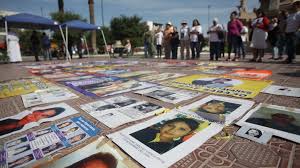
The final thread is probably the most touching, because we get close to a human being battling with an issue that she can’t let go, and that won’t let go of her; the struggle of Lauren Berlant, a compulsively energetic writer and thinker, against cancer. Walsh’s film is not so much about “resilience” as it is about a kind of human obstinacy, sometimes bordering on the irrational, to refuse the scale and extent of modern catastrophes, to refuse and reject powerlessness and inaction even though reason might tell us that, in certain cases, nothing can be done. And sometimes miracles happen. Bodies can be identified, a cancer can be cured. From time to time there are small victories. And perhaps this mixed awareness gives rise to the mixed feelings we have as the final credits roll up. OK, people are resisting, reacting, fighting. But the scale of things isn’t to our advantage yet. And still we go on creating “dead zones” around the planet and we will continue to create them until something fundamental changes in the dynamics of our societies.
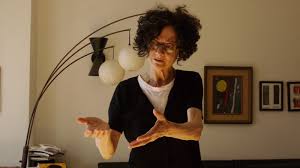
And
this is the principal message of practically every film on the
indigenous peoples of North America that I’ve seen since I began
attending the festival, some five years ago. Something fundamental
has to change. And it has to do with our conception of, and
interaction with, our environment, the planet, and with our human
community which today extends ring after concentric ring worldwide.
Jeffrey Palmer’s film on “N. Scott Momaday, Words of a Bear”, is a glowing example of this kind of concern, rendered in the simple, poetic light of a biography, accompanied by the author’s own words and selections from his writing. The threads we follow are simple enough : a history of Momaday’s life and career told using the classical aids of photos and archive footage ; a series of recent interviews with the man, physically handicapped, but every bit as alive and stirring when he speaks as ever he was. And three or four of his stories or tales illustrated with simple and evocative animation. The filmmaker is smart enough to use his film as a vehicle for us to come into contact with the writer and the spirit of the man, which means coming into contact with the uncontrived profundity of his language, his mystical attachment to nature and the community. And so this hour and a half long “introduction” passes like a luminous breath of wind, and we are spellbound.
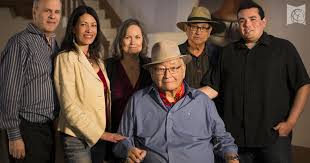
Tasha Hubbard’s film on the Colten Boushie trial is more complex, more difficult. “nîpawistamâsowin - We will stand up” tells two tales: one of which is that of the Boushie family as they strive to have the death of young Colten condemned as intentional murder, and not exonerated as an accident or an act of self defense. This effort is from the outset complex because the family is not itself party to the murder trial, it is the state, in this case Saskatchewan’s crown prosecutor, that bears the responsibility of bringing the charges, assembling the evidence and carrying forward the case. The film makes clear that there was no indigenous input either into the prosecutor’s office, nor to the jury selection process or the jury itself. This was an important factor in understanding the jury’s unanimous “not guilty” finding. The family and their supporters were held at a distance with their only hope, a slender one at best, being in the fairness of the system. So the film centres on the family and in particular Colten’s cousin and mother, two women who are the driving spirits behind the movement to turn the trial into a moment of truth about the racism and anti-indigenous bias among the white Saskatchewan population and its judicial system.
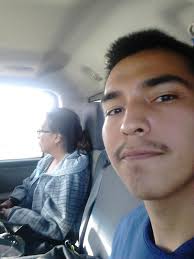
We learn little about the man charged with the crime, Gerald Stanley, except that he seems highly typical. Typical of a settler society that believes in the sanctity of private property, that believes that private property is a value to be held higher and more dearly than any other, including the tenet: “Thou shalt not kill”. Faced with a drunken gaggle of young aboriginals attempting to mess around with his quad or whatever the hell it was (on the scene surrounding the shooting, the film doesn’t communicate as clearly as it might) Stanley ran into his house, and as Jade Tootoosi, Colten’s cousin, says in a key moment, he didn’t run for his phone, he ran for his gun. And all the power of the instinct to “preserve property” came to the fore at that moment when a kid trying to drive out of there got shot in the back of his head.
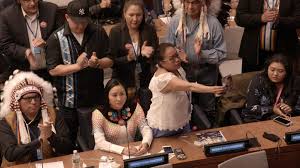
Colten's
family at the UN
So on one level the film functions as an empathetic report on a family’s struggle to get recognition of their perception that the act was racially biased, the prosecution and the way the prosecution was handled was racially biased, the jury and jury selection process were racially biased and the entire procedure from beginning to end, with the inevitability of a Greek tragedy, is an acting out of racial bias.
And
then, there’s the other thread. Because Hubbard can feel within
herself the conflict of mind and heritage that drives through the
community of North Battleford. She is native Indian, a daughter of a
Cree family, “adopted” at a young age by a white Saskatchewan
farmer’s household, probably a victim of the sixties scoops she
talks about in a previous film “Birth of a Family”. So she
has two fathers, one Cree, with whom she remade contact as a young
adult, and the other white. Her white grandfather, with whom she
clearly shares much tenderness and love, is the one who enunciates most
explicitly in the film the attachment of the settler community
to their “things”, to the property they’ve spent all their life
tending and building up.
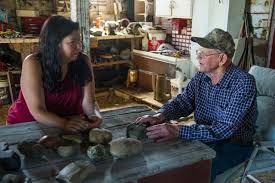
Generation
up
This scene, near the end of the film, serves to reinforce statements already recorded in town hall meetings where police agents have attempted to discuss with the community how to handle tensions of this sort. Hubbard objects and we can only object with her, that the “right” to defend property does not extend to the “right” to take life. The value conflict overlays the racial prejudice built on years of co-existence, oppression and misunderstanding. There is no doubt as to where Hubbard stands on all this, and on where she wants us to stand, but she feels and communicates the pain of this division, a pain of which she is careful to sketch out the historical roots at the beginning of the film, in the story of the 19th century conquest, resistance and seizure of native lands in the area.
And she is very eager to transmit the drama and this history over the generations, to her own sons, two boys, one of whom a pre teen and is old enough to begin to understand. She is very eager to transmit her own native heritage, and her vision of this story, its causes, and where it must go. She has already made a significant contribution in documentary to the memory of anti-indigenous racism (“Two Worlds Colliding”, “Birth of a Family”). This film is a more personal vehicle for her to forward this project; it is a fine and moving statement which leaves us, like much good art, deeply disturbed and unsettled.
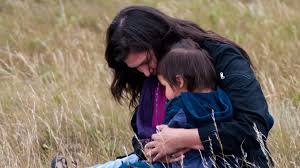
To
finish, we saw two films on oppression and courage. “Advocate”
by Rachel Leah Jones (American-Israeli documentary filmmaker) and
Philippe Bellaïche (Israeli cameraman and presumably on this project
co-director) a filmed biography about a lawyer, Léa Tsemel, who has
spent her life engaged, and truly engaged, in the defense of
Palestinians, or Israelis for that matter, accused of terrorism.
Following her action for some six months (one guesses) we see her
take in charge two cases which provides the film with a twin time
frame, chronological, because we see the cases develop, the stages of
her preparation, discussions with the family and so on, and
historical, with plunges into her past, Israel’s past, and the key
phases of her life and career. The whole thing is sharply
photographed and edited with clever use of drawn abstraction which
serve on one hand to disguise the faces of the accused who do not
want to be recognised, but on the other to lend an abstract, edgy
quality to the image connecting with other media and forms.
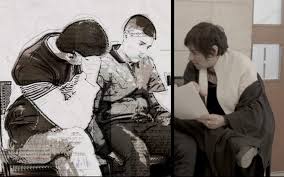
Lea Tsemel and drawing
We do not emerge particularly encouraged or hopeful from the experience; we have the confirmation that Israeli society has walled itself into an extremely aggressive paranoia that can only result in more bloodshed and despair, on which its paranoia feeds and strengthens itself in a, for the moment, unbreakable cycle. Tsemel’s courage and lucidity (and that of her husband Michel Warshawski) are testimonials to what makes the human being such a magnificent (and yet detestable) animal. But her isolation and the “David and Goliath” struggle that she is up again (and loses) day after day do not promise an improvement in the situation any time soon.
And then, final screening, Ai Waiwai’s look at the experience of refugees and migrants around the four corners of Europe, “The Rest”. The remarkable thing about these images is not the useless suffering and despair recorded, we know about that. It’s not the stupid cruelty and sadism of the police, we know about that. We know about the abjection of European and Western indifference to the plight of the tens of thousands of people fleeing the wars that western powers could have stopped if they had wanted to, in particular in Syria, Yemen and Aghanistan. But they didn’t and they don’t. They’re more interested in the Saudi Arabian arms market and in avoiding confrontation with the international bullies running Russia and China. What is remarkable about the film is the humility of Ai Waiwai’s viewpoint. There are a couple of scenes where the director is expressly solicited, usually for help in one way or another. Of course there is little he can do beyond record and transmit. But this world class artist doesn’t pretend to do anything else. And there is not the slightest trace of “auteuristic” posturing which pollutes the work, on the same ground, of some of our renowned European documentary “auteurs”. It’s a remarkable piece of work and throws the question, what can we do?, straight into our faces.
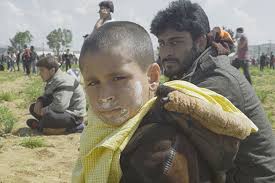
And
that’s it. Behind the business politics and hype, Hot Docs does its
job effectively, with panache and certainly with passion. It shows us
material in artistically challenging form to feed our pessimism or
our optimism about the workings of our society, the planet and
humanity. And leaves in our laps the fundamental question of what to
do. Anyone on for next year?
MH